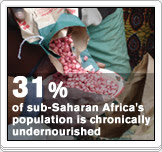 Intergenerational Partnerships for Sustainable Development offer a model for collaboration, exchange of ideas and experiences, and action between people of all ages. The model focuses on sustainability while bridging differences in values.
Intergenerational Partnerships for Sustainable Development offer a model for collaboration, exchange of ideas and experiences, and action between people of all ages. The model focuses on sustainability while bridging differences in values. Its added value is:
• Enhanced decision-making
• Fill the gap between different generations
• Sustain the values in society and allow flexibility for change
• Achieve intergenerational equity.
 Intergenerational partnerships can take the following forms:
Intergenerational partnerships can take the following forms:• pairs of individuals from different generations in a mentor/mentee relationship
• young people interning in NGOs or with governments
• networks / organizations from different generations co-managing sustainable development and peace building projects
• young people being included within NGO and/or country delegations in global governance processes on sustainability
• supporting young people to engage in pertinent scholarship and providing a platform for disseminating and applying their research
• youth organizations consulting and working in collaboration with elders on projects, programs, etc.
This in a nutshell is the outcome from a workshop during the Tiblisi+30 ICEE in Ahmedabad. The Youth Initiative from Earth Charter is planning to draft a resolution on this issue to be adopted by the IUCN World Conservation Congress in October 2008.
























































